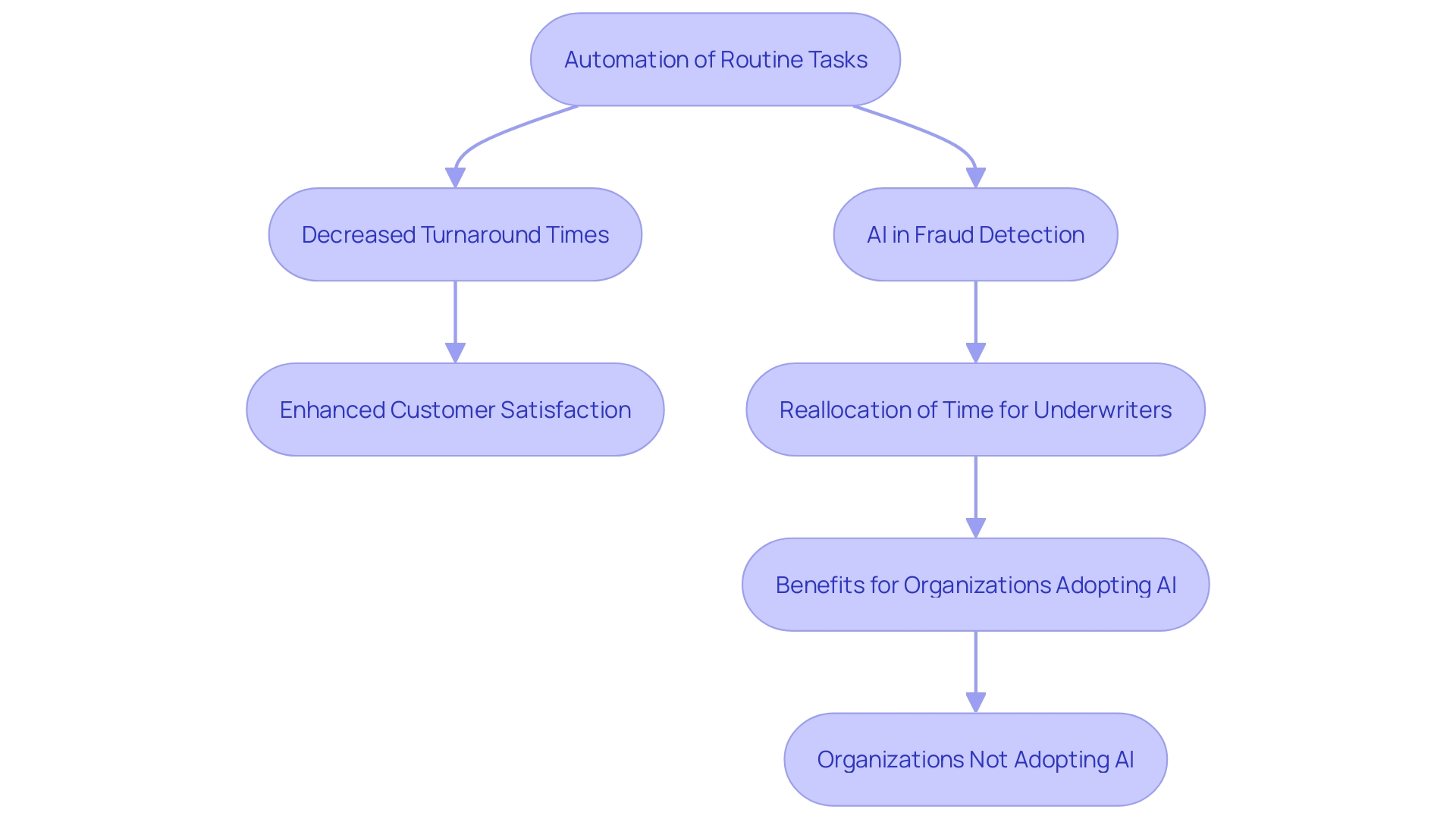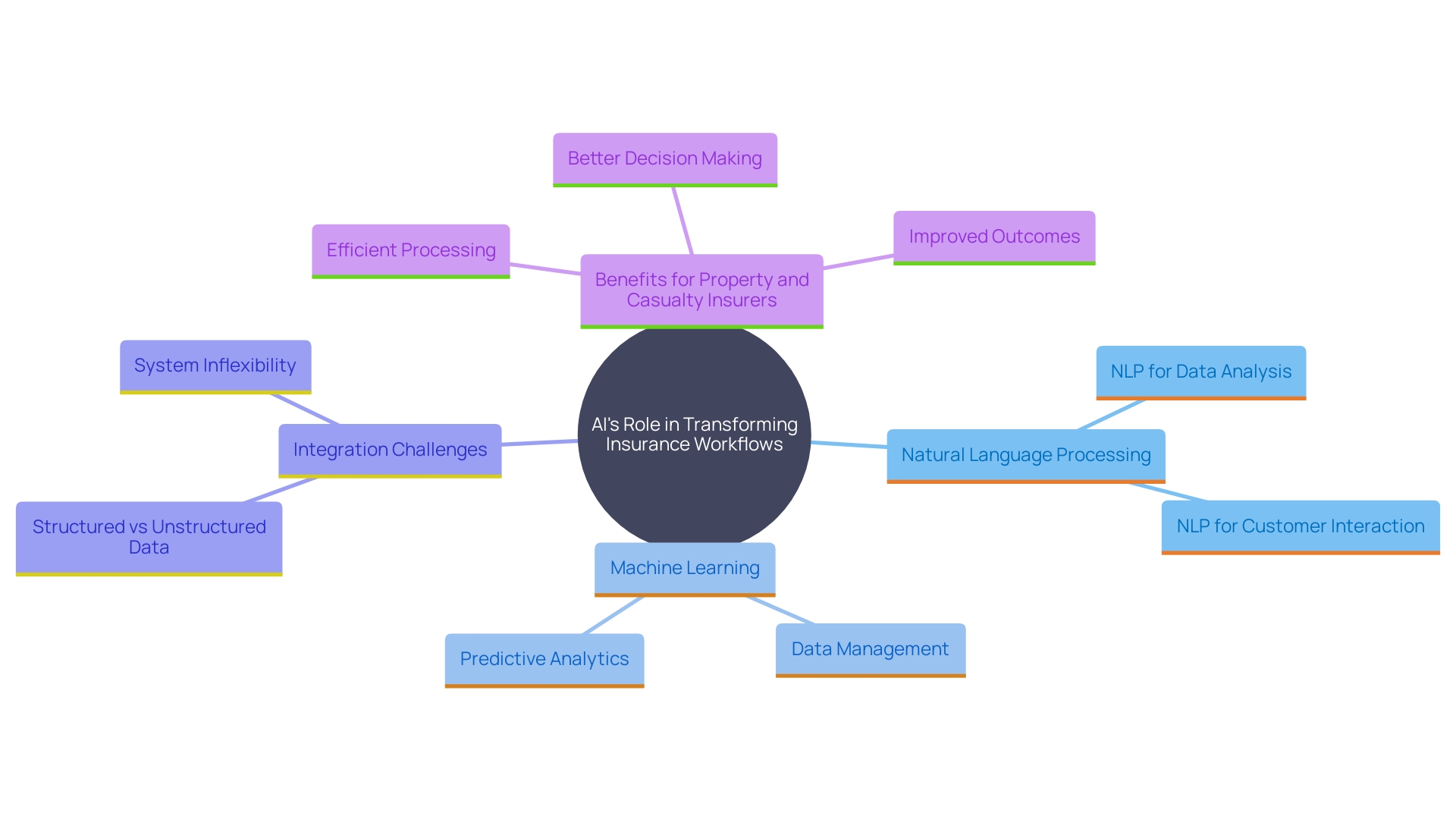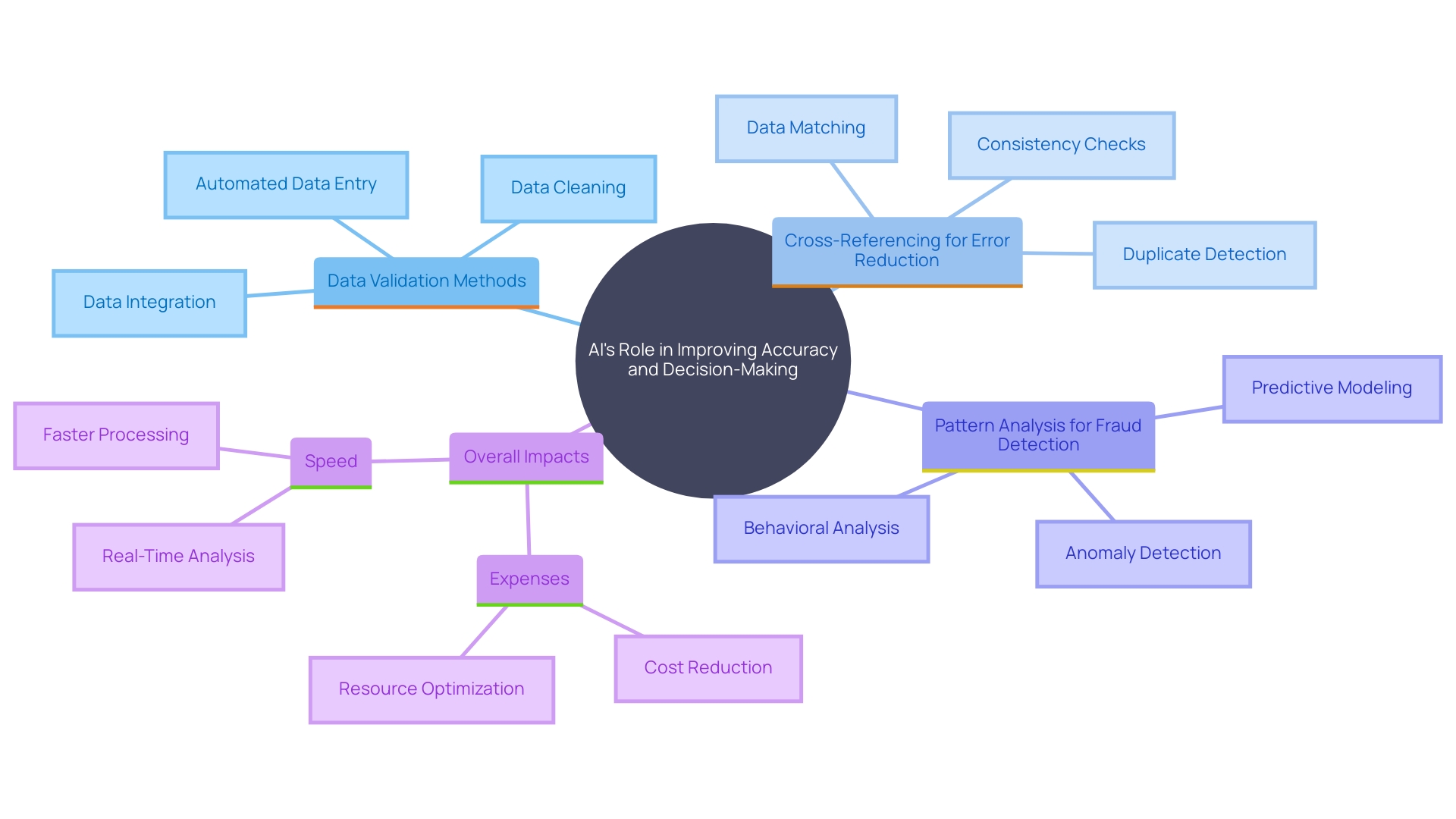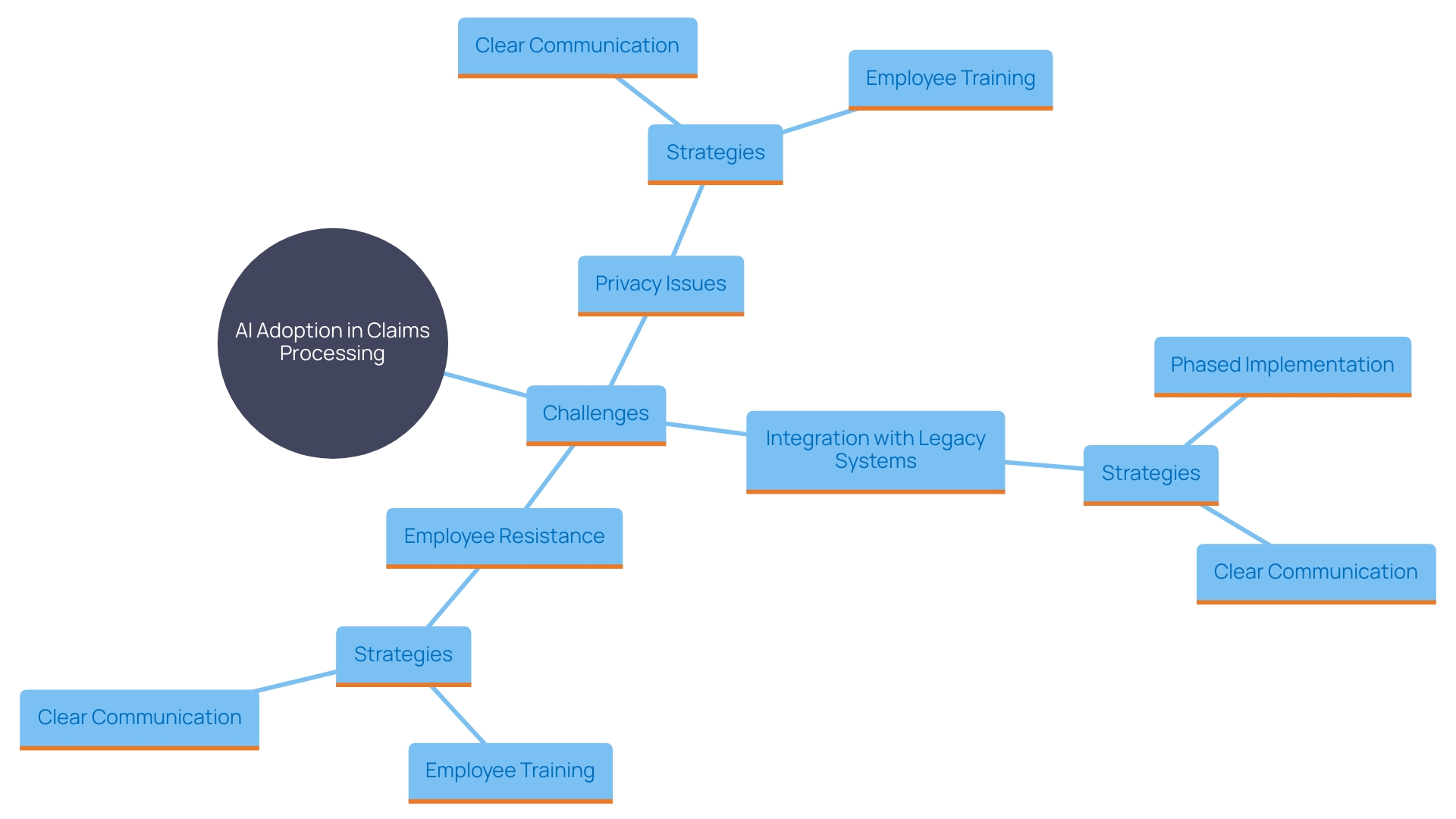Introduction
In an era where efficiency and accuracy are paramount, the insurance industry is increasingly turning to Artificial Intelligence (AI) to revolutionize claims management. As insurers grapple with the vast amounts of structured and unstructured data inherent to their operations, AI emerges as a beacon of innovation, drastically reducing processing times and enhancing customer satisfaction. By automating routine tasks and leveraging advanced analytics, AI not only accelerates decision-making but also plays a pivotal role in early fraud detection, thereby minimizing losses and boosting profitability.
Despite the promising benefits, the journey towards full AI integration is fraught with challenges. Balancing technological advancements with robust governance frameworks is essential to ensure sustainable digital transformation. Moreover, addressing data privacy concerns, integrating with legacy systems, and overcoming employee resistance are critical hurdles that need strategic solutions.
This article delves into the transformative potential of AI in insurance claims management, exploring how it enhances accuracy, streamlines processes, and offers practical solutions to the industry’s inherent challenges.
Benefits of AI-Driven Insurance Claims Management
Artificial Intelligence (AI) is transforming the management of requests by enhancing both efficiency and accuracy. By automating routine tasks, AI significantly decreases turnaround times, enabling insurers to settle claims faster and enhance customer satisfaction. According to Capgemini, organizations that have implemented AI show significant gains in speed, reduced expenses, and improved target achievement compared to those that haven’t.
AI-driven analytics also play a crucial role in early fraud detection, minimizing losses and enhancing profitability. In fact, property/casualty insurers were among the first to adopt AI and are already seeing benefits. However, the journey hasn’t been straightforward. While 91% of financial services and insurance leaders report launching AI proofs of concept, only 36% are using them widely across business functions. Despite these challenges, AI provides a solution for managing and processing the vast amounts of organized and unorganized information that insurers handle daily.
Moreover, AI helps in reallocating time spent on administrative tasks. Reports show that underwriters spend 41% to 43% of their time on administrative duties like data entry, leaving only 32% to 33% for essential tasks such as risk assessment and premium calculation. By automating these tasks, AI enables underwriters and adjusters to concentrate more on essential activities that require human intervention, thereby promoting better decisions and results.

How AI Automates Claims Processing
‘The application of AI in insurance request handling transforms the complete workflow, from initial reporting to final settlement.’. Utilizing natural language processing (NLP), AI effectively examines claims information submitted through various channels, including chatbots and mobile applications. Furthermore, machine learning algorithms analyze historical information to speed up decision-making, thus guaranteeing a smooth workflow and reducing manual mistakes. This technological advancement not only streamlines operations but also significantly reduces operational costs.
Recent studies indicate that while 91% of financial services and protection leaders have initiated AI proofs of concept, only 36% have successfully integrated them across all business functions. Despite the challenges, property and casualty insurers have been pioneers in adopting AI to tackle real-world issues, and many are now reaping the benefits. This move towards AI-driven efficiency addresses the industry’s need to balance innovation with robust governance frameworks, ensuring sustainable digital transformation.
For instance, AI-driven systems can now manage and process the complex mix of structured and unstructured information that insurers deal with daily. This capability is crucial for efficiently handling applications in areas such as property casualty, reinsurance, and commercial lines. The adoption of AI thus emerges as a catalyst for efficiency and prioritization, revolutionizing the insurance sector by transforming how information is utilized and decisions are made.

Enhancing Claims Accuracy and Efficiency with AI
AI significantly enhances accuracy by utilizing advanced data validation methods, cross-referencing information from various sources to reduce human errors and guarantee data integrity. This meticulous approach ensures that requests are processed based on precise and verified information. Additionally, AI algorithms excel in analyzing patterns and trends, allowing them to predict the probability of requests being legitimate or fraudulent. According to a Capgemini report, organizations that have adopted AI for automated decision-making have seen notable gains in speed and reduced expenses, outperforming their peers. By enhancing accuracy, insurers can make well-informed decisions, thus driving overall efficiency and productivity in their operations.

Challenges and Solutions in Implementing AI in Insurance Claims
The incorporation of AI into claims processing provides transformative advantages but also introduces several challenges. Tackling privacy issues is crucial. Recent studies highlight that balancing technological innovation with well-defined regulations is essential to ensure sustainable digital transformations within the sector. This balance helps build trust and protects user information, reducing privacy risks.
Integration with legacy systems is another significant hurdle. The coverage sector frequently handles extensive volumes of varied organized and unorganized information. Traditional systems struggle to manage this complexity efficiently. AI and machine learning can mitigate these issues by effectively prioritizing and processing data, but transitioning from outdated infrastructure requires careful planning and investment.
Employee resistance to change is a common obstacle. Clear and transparent communication about the benefits and impacts of AI can help address this resistance. Investing in comprehensive employee training is crucial, as it equips staff with the necessary skills to adapt to new technologies. A phased implementation strategy allows for gradual adaptation, making the transition smoother and less disruptive.
Overall, while AI adoption in insurance is challenging, it holds the promise of significantly improving operational efficiency. By focusing on transparent communication, robust training programs, and phased implementation, insurers can successfully navigate these challenges and harness the full potential of AI.

Conclusion
The integration of Artificial Intelligence in insurance claims management presents a transformative opportunity for the industry. By automating routine tasks and leveraging advanced analytics, AI enhances efficiency and accuracy, allowing insurers to process claims faster and improve customer satisfaction. The significant reduction in operational costs and the ability to detect fraud early are compelling reasons for the industry to embrace these technologies.
Despite the clear benefits, the path to full AI adoption is not without its challenges. Data privacy concerns, integration with legacy systems, and employee resistance are hurdles that require strategic solutions. Establishing robust governance frameworks and prioritizing transparent communication can build trust and facilitate smoother transitions.
Furthermore, investing in employee training ensures that staff are equipped to adapt to new technologies, ultimately driving better decision-making and operational outcomes.
In conclusion, while the journey toward AI-driven efficiency in insurance claims management may be complex, the potential rewards are substantial. By addressing the challenges head-on and focusing on sustainable implementation strategies, insurers can unlock the full capabilities of AI, leading to enhanced accuracy, streamlined processes, and improved profitability. Embracing this digital transformation will not only benefit individual organizations but also elevate the industry as a whole, paving the way for a more innovative and efficient future.
